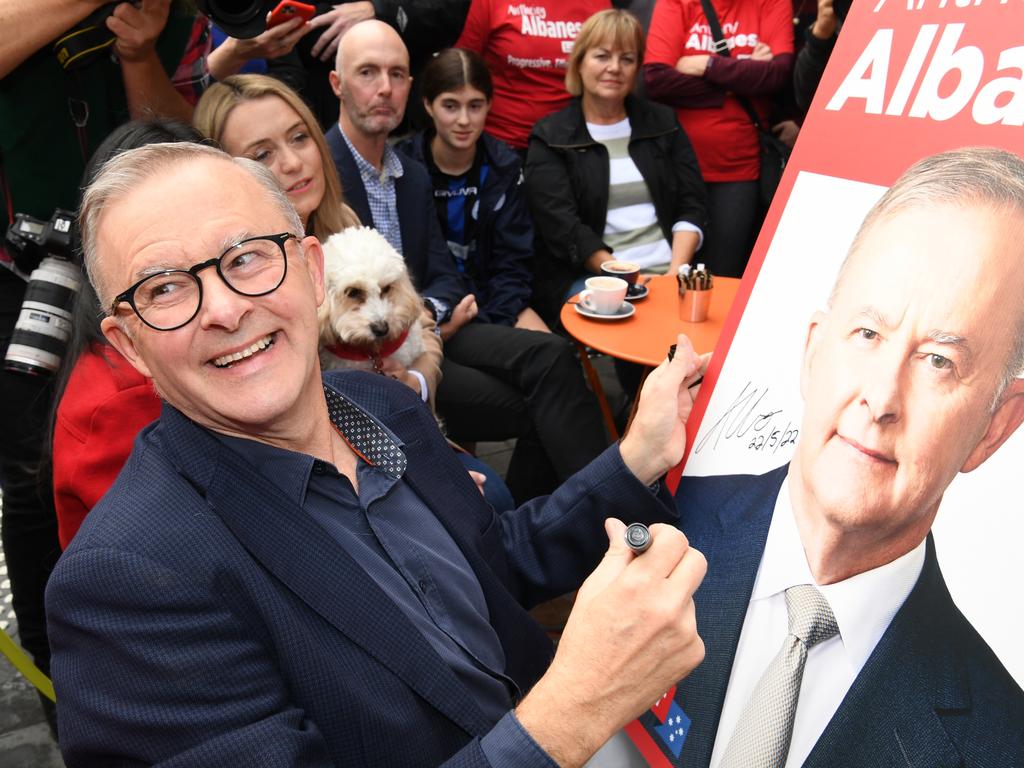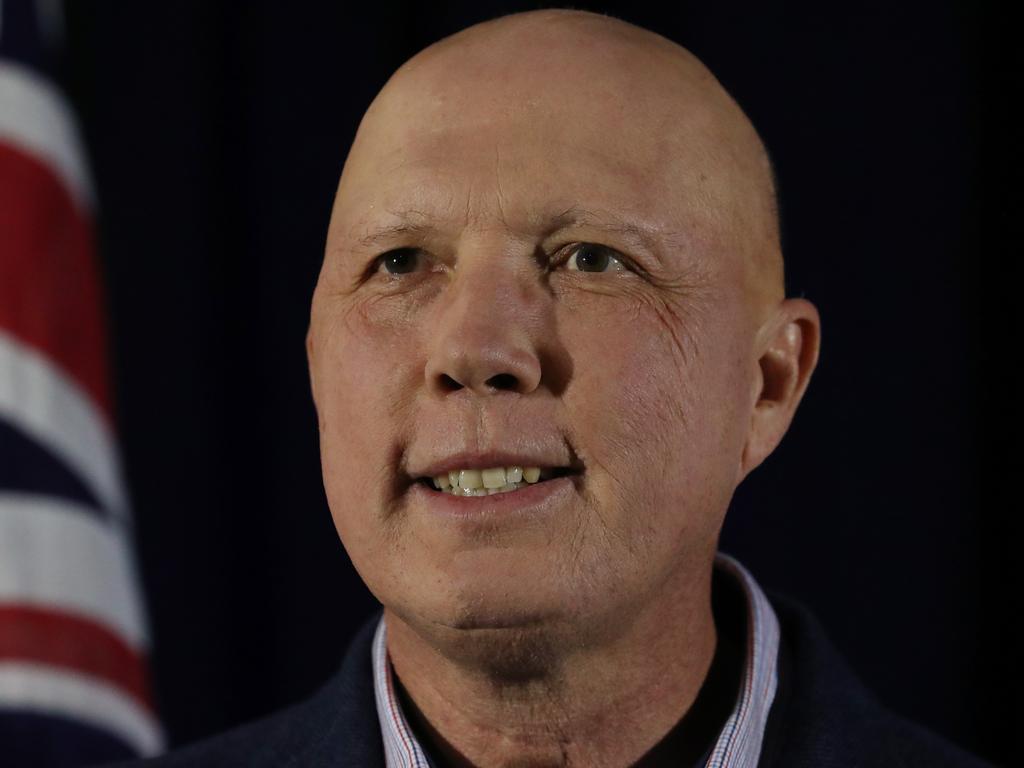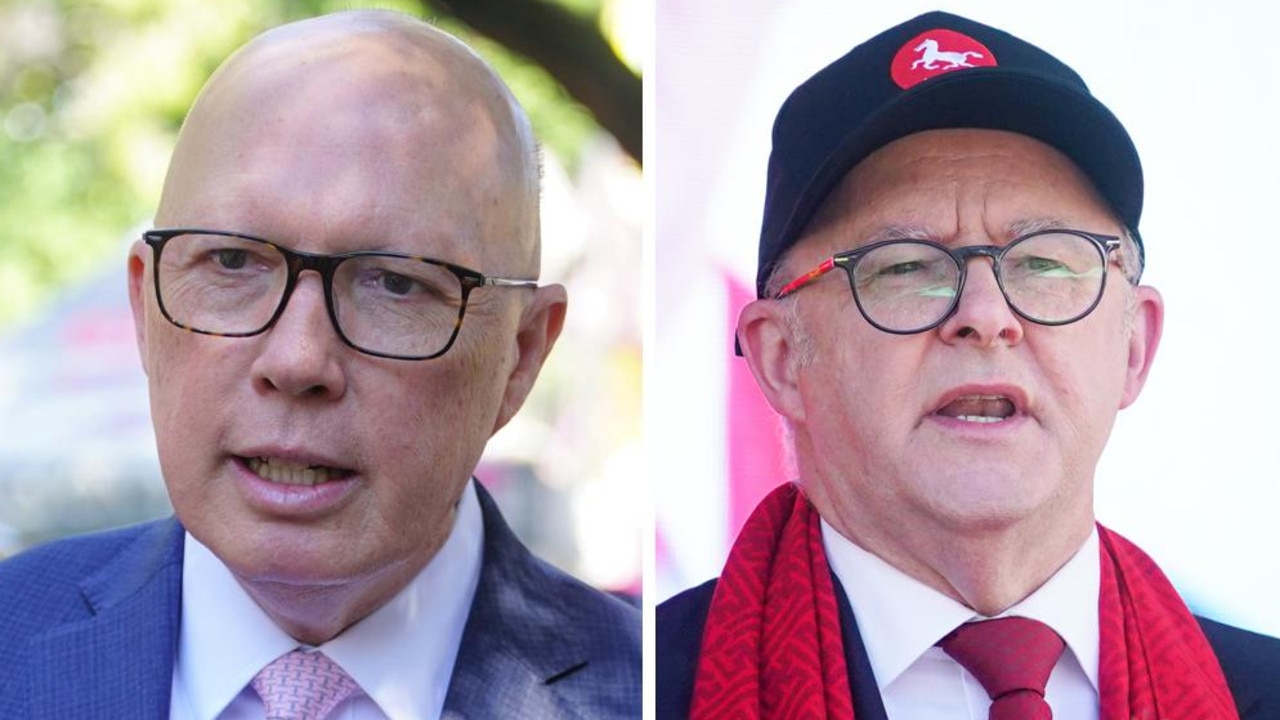Anthony Albanese’s Labor government faces challenges of economic reality
Anthony Albanese will be sworn in today amid amplified financial market volatility and rising dread of a global slowdown.
Middle Australia has made an abrupt electoral reset, just as the world economy becomes increasingly more hazardous to navigate.
Anthony Albanese will be sworn in on Monday amid amplified financial market volatility, Covid-19’s ongoing shocks, and rising dread over the prospect of a global slowdown curdling into stagflation.
The incoming government inherits unemployment at a 48-year low of 3.9 per cent, but gross debt of $889bn, and a budget deep in the red after the pandemic spree on emergency income support for households and businesses.
Labor also faces a central bank hitting the brakes on the road to monetary orthodoxy, after the Reserve Bank raised its cash rate from 0.1 per cent to 0.35 per cent three weeks ago.
When Kevin Rudd swept to power in 2007, the unemployment rate was 4.4 per cent, but Canberra had a rare budget surplus and no debt, after allowing for financial assets, and the RBA’s cash rate was in normal terrain at 6.75 per cent.
Last month, the International Monetary Fund raised its forecast for Australia’s GDP to 4.2 per cent, the only rich country to be marked up, due to surging commodity prices. But the IMF scaled back global growth to 3.6 per cent this year and next, due to the war in Ukraine, supply shortages and runaway inflation in the major economies.
New treasurer Jim Chalmers maintains Labor’s five-point economic plan is designed to keep inflation in check, get wages growing and make investments to grow the economy, a task veteran economists believe is more difficult than it was six weeks ago.
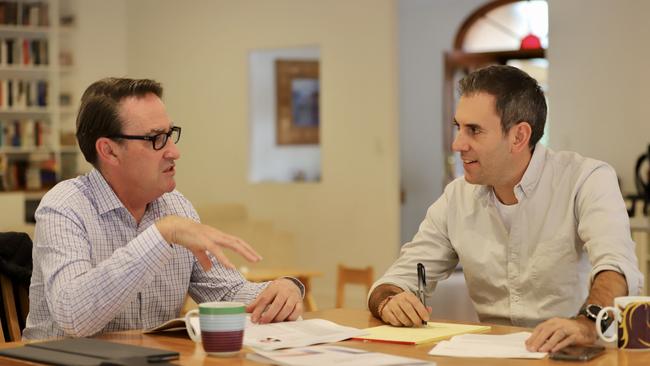
The pre-election economic and fiscal outlook, prepared a month ago by Treasury and the Department of Finance, will make way for the “red book” to guide Dr Chalmers on fiscal options. Economist Chris Richardson said “the dangers to the economy have risen if you’re now updating the books”. “While Australia’s attention was on the election campaign, the world did darken and become more complex,” Mr Richardson told The Australian.
“On many measures we have the strongest economy in half a century, yet for many Australians the long-term structural implications of rising inflation and interest rates and slow wages growth are not great.
“The bad news is piling on and the cupboard of defences is pretty bare. If something goes wrong, there are very big limits on what the RBA can now do. The budget has a lot less wriggle room.”
The price of borrowing has been rising, even for AAA-rated customers, as the commonwealth is finding each time it taps the market for funds for running and capital expenses.
Commodity markets, too, may be turning against us, although Treasury’s forecasts for iron ore and coal prices in the March budget were conservative.
Wall Street is on its worst run since the dot-com bust, with the S&P 500 dipping into bear-market territory, that is a 20 per cent plunge from its January peak, on Friday afternoon. The index has tumbled for seven straight weeks, as the US Federal Reserve tightens the monetary screws.
Inflation is rampant in Europe, war in Ukraine is taking a huge toll, while poorer parts of the world are worried the besieged country’s grain harvest is in peril and they’ll go hungry.
Mr Richardson said: “China’s slowdown has accelerated and the slack in Europe has begun to solidify as the conflict in Ukraine has been cemented in place.
“Everything that could go wrong in China did go wrong, and we’re now seeing the problems emerging in property, the technology sector, secondary sanctions effects linked to Russia and the large demographic challenge from fewer babies that immediately shows up in less spending.”
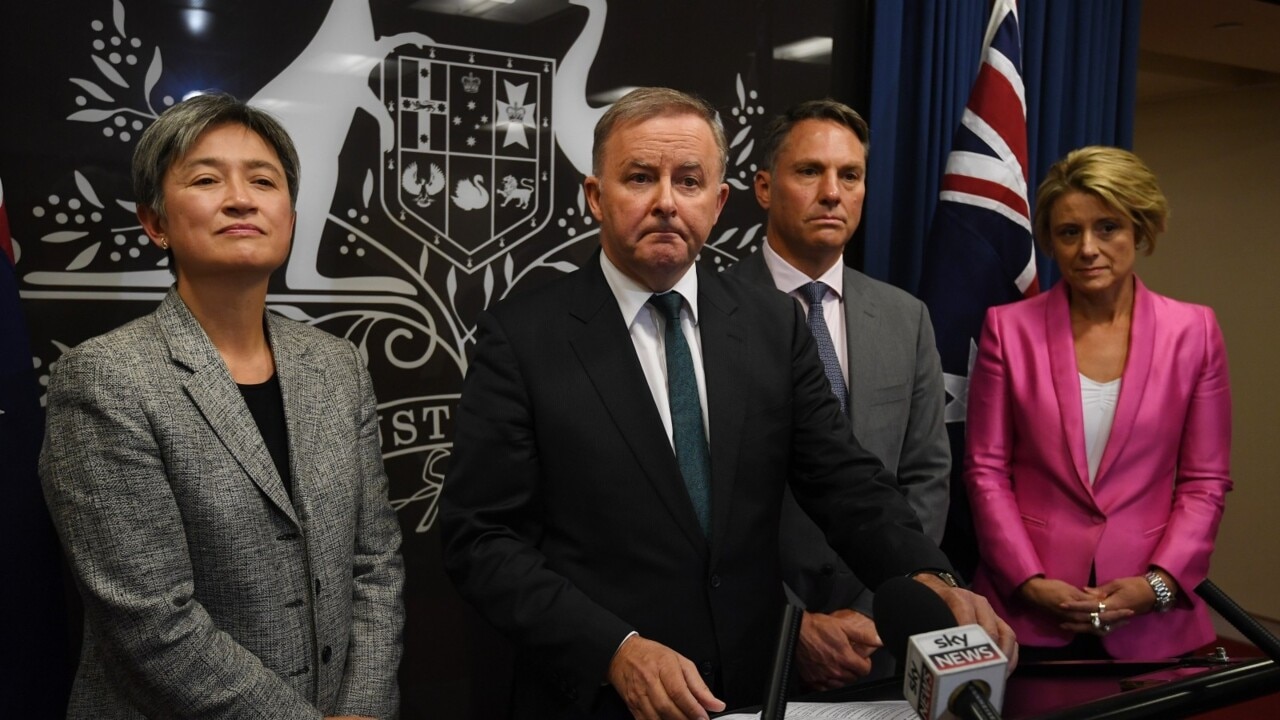
In response to the spike in inflation for producers and consumers, central banks are operating within a narrow corridor, but in a world of cascading unknowns.
The Washington-based IMF warned that “unusually high uncertainty” surrounds its forecasts.
The RBA’s cash rate increase on May 3, the first since November 2010, was made amid this uncertainty and with several risks at the forefront of its thinking.
Westpac chief economist Bill Evans expects the RBA to raise interest rates to 0.75 per cent at its next meeting, and to eventually settle at 2.25 per cent in this tightening cycle.
“The inflation challenge and the actions of other central banks are emphasising that the RBA is well behind the curve and needs to catch up,” Mr Evans said.
RBA governor Philip Lowe has foreshadowed several rate hikes in coming months as inflation peaks at 5.9 per cent later this year, with the official cash rate likely to hit 2.5 per cent next year.
In a warning to homeowners, the RBA’s May board minutes noted “some Australian households had incurred more debt than previously and many had never experienced rising interest rates”.
“Housing prices in Australia could also be more sensitive to rising interest rates than assumed, which would be likely to result in lower household wealth and consumption,” the RBA said.
Another uncertainty related to how household spending in rich nations, including in Australia, would respond to rising interest rates and falling real wages.
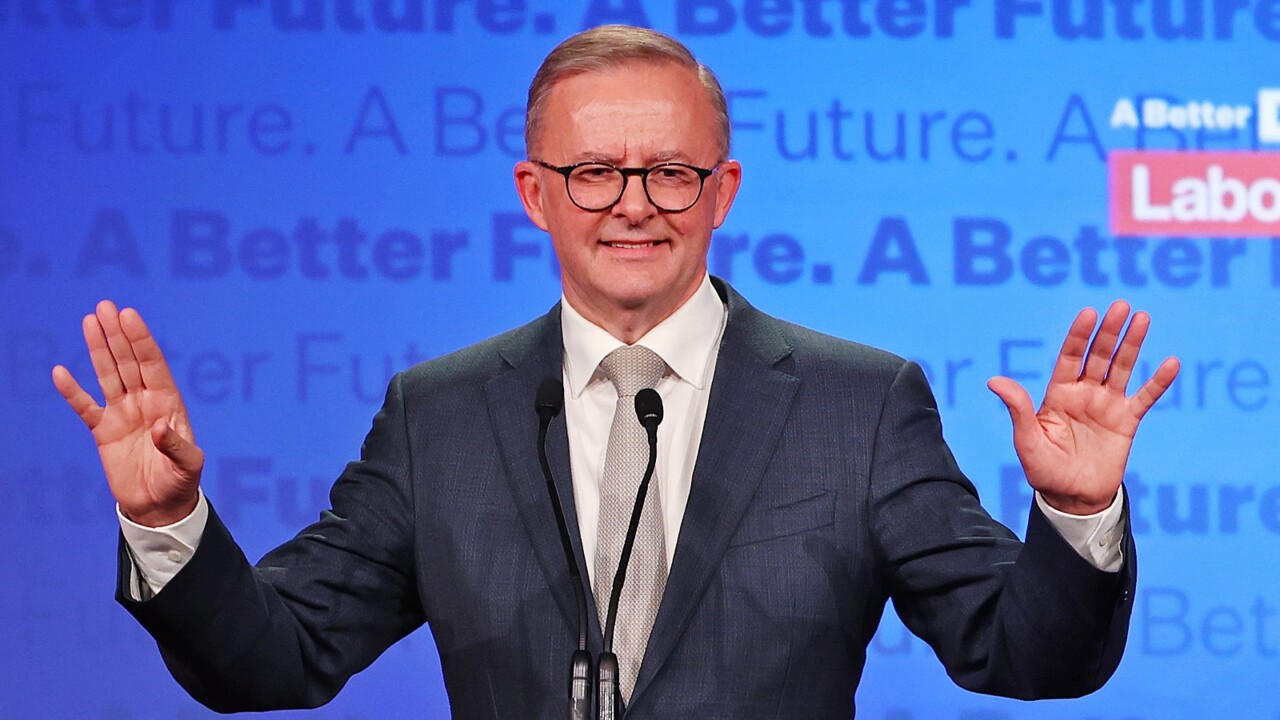
Mr Albanese made firing up wage growth, running at an annual 2.4 per cent compared with headline inflation of 5.1 per cent, one of his central pledges to voters.
Ai Group chief executive Innes Willox said the employer group would work with the government and others “to achieve the shared objective of raising real wages and profits”. “Most fundamentally, this will require a firm commitment to raising productivity both through government policy initiatives and in Australia’s workplaces,” he said.
But economist Mr Richardson said over the past two decades Australia struggled to deal with reform challenges such as higher productivity, tax reform, climate change, infrastructure provision and federal-state relations, all of which had got worse under successive governments.
“There are many spot fires out there,” Mr Richardson said. “The new government won’t easily be able to tackle any of these issues having pursued a narrow agenda. Small target is small mandate.”
Add in the ongoing effects from the floods on the east coast, which will put up the cost of produce and add to demand for building materials and trade workers, inflationary pressures are becoming persistent.
At home, the long tail of the pandemic also presents a risk. The nation has high rates of vaccination and our hospital systems are coping, but the seven-day average of daily new Covid-19 cases is currently above 50,000.
Yet, as they say on the small screen, winter is coming, and the Albanese government is facing the big chill on many fronts.


